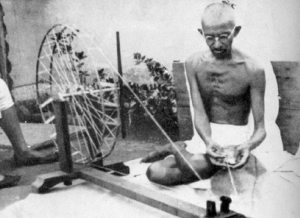How South Africa’s Phoenix Farm served as a nursery for Mahatma Gandhi’s idea of Satyagraha
Source: Times Now News / www.timesnownews.com / By Sidharth Shekhar /
From Khan Abdul Ghaffar Khan to Nelson Mandela, Mahatma Gandhi’s idea of Satyagraha and non-violence continues to shape global opinions.
New Delhi: As India gears up to commemorate the 150th anniversary of Mahatma Gandhi, it is important to understand the idea that shaped Gandhi and gave India a powerful tool to challenge the British authority.

Before returning to India, Gandhi had successfully tested his strategy of Satyagraha, of non-violent non-co-operation in South Africa.
Fighting against injustice and class division, Gandhi championed the idea of class cooperation in South Africa. The treatment meted out to Indian settlers in South Africa further strengthened his resolve to fight for injustice and ethnic discrimination.
Gandhi’s acceptance as the leader of the Indian community in South Africa and his overall involvement in the non-violent movement there was such that he is still revered as a leader there.
While addressing a meeting in New Delhi Gandhi said though he was born in India, it was South Africa which made him.
Let’s revisit the tools forged by Gandhi in South Africa which later were transported to India to fight the British colonialism.
The term Satyagraha was invented and employed in connection therewith, writes Gandhi in his seminal work ‘History of Satyagraha in South Africa’.
English artist John Ruskin’s book ‘Unto This Last’ made a transformational impact on Gandhi after which he decided to set up Phoenix Farm near Durban. It was here, where Gandhi shaped his idea of non-violent Satyagraha or peaceful restraint and trained the members of the farm about chief tenets of his philosophy which was going to have a far-reaching impact on India and the world.
Thus, Phoenix Farm became the laboratory in which Satyagraha was conceived but it was the Tolstoy Farm, Gandhi’s second farm in South Africa where Satyagraha was weaponized into ammunition to breach the shield of British imperialism.
Satyagraha not only forced the British Empire to hear the plight of the Indians but also gave direction to the Indian youth and the freedom struggle by uniting the people of the country.
Speaking at the opening ceremony of the Phoenix settlement in 2000, South African President Thabo Mbeki said: “At Phoenix we are faced with the challenge of demonstrating to the rest of our country that it is possible for people who come from diverse cultural backgrounds to live together in harmony, to learn from one another cultures, and, in so doing, through this rich fusion of traditions and ideas, through a process of cultural interactions to build a new country of peace and economic prosperity.”
Later, Satyagraha turned into a worldwide phenomenon greatly influencing the liberation movement in South Africa and the civil rights movement spearheaded by Martin Luther King Jr. in the United States.
King, heavily inspired by Gandhian principles during his visit to India, wrote that “while the Montgomery boycott was going on, India’s Gandhi was the guiding light of our technique of nonviolent social change.”
South African anti-apartheid revolutionary and President Nelson Mandela, while accepting the Nobel peace prize in 1994, credited Gandhi for his success.
Gandhi’s idea of Satyagraha has a global footprint and its impact can be measured by works done by his followers. From fighting racial segregation to religious and economic injustice, Gandhi’s global followers like Khan Abdul Ghaffar Khan, Nelson Mandela, Martin Luther King, Jr., Lech Walesa, Vaclav Havel, Benigno Aquino, Jr. to name a few spearheaded social movements in their own countries.
The impact of Gandhi and his immortal idea of Satyagraha is revered world over and it is more than relevant now at a time when issues like religious conflict, climate change, and political polarization threaten to take the world apart.

